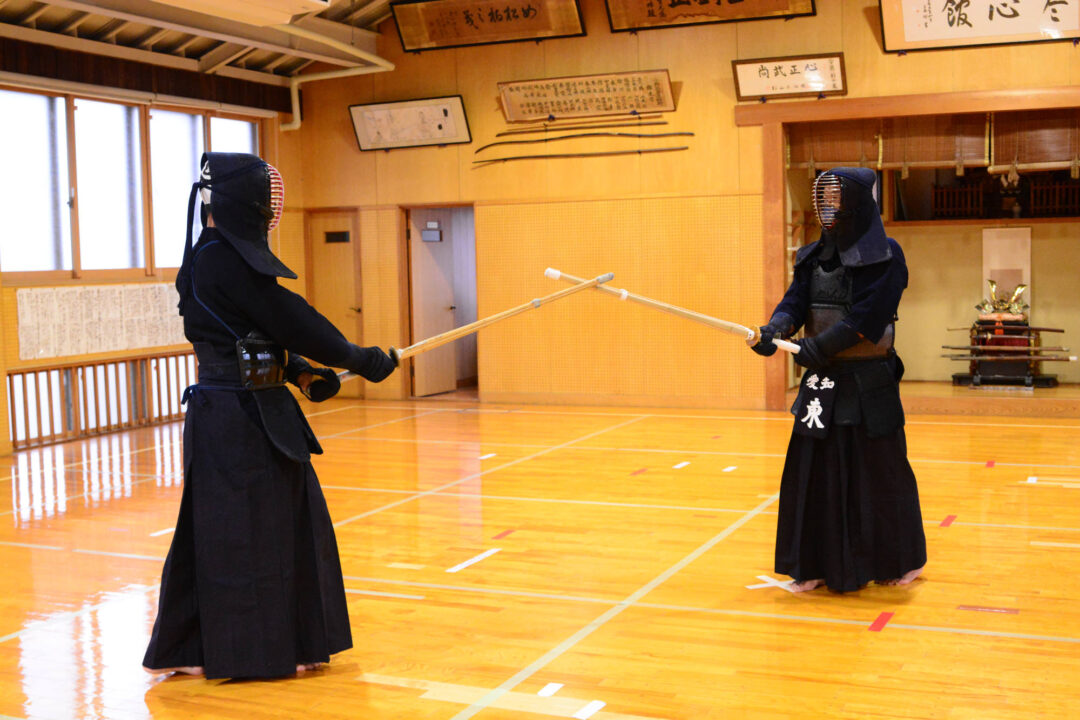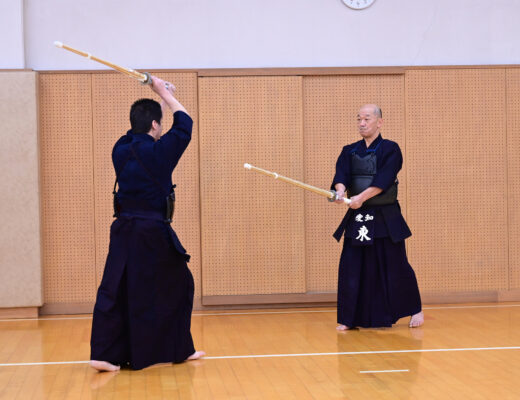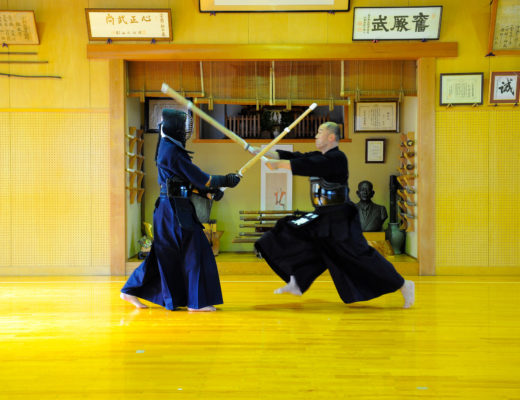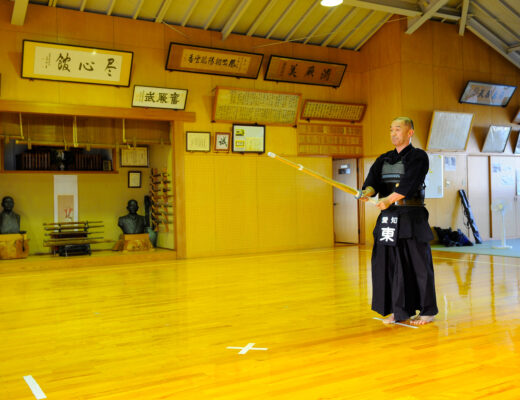KENDOJIDAI 2021.4
Since his younger years, Higashi Yoshimi was aware of the 8th Dan examination, and has repeatedly recorded his own Tachiai Keiko to use that footage in his following Keiko. The video footage shows a constant reflection of himself. When he clearly understood the workings of his own movement, he was able to see the path to improvement.
Translation: Jouke van der Woude
Higashi Yoshimi, Hanshi 8th Dan
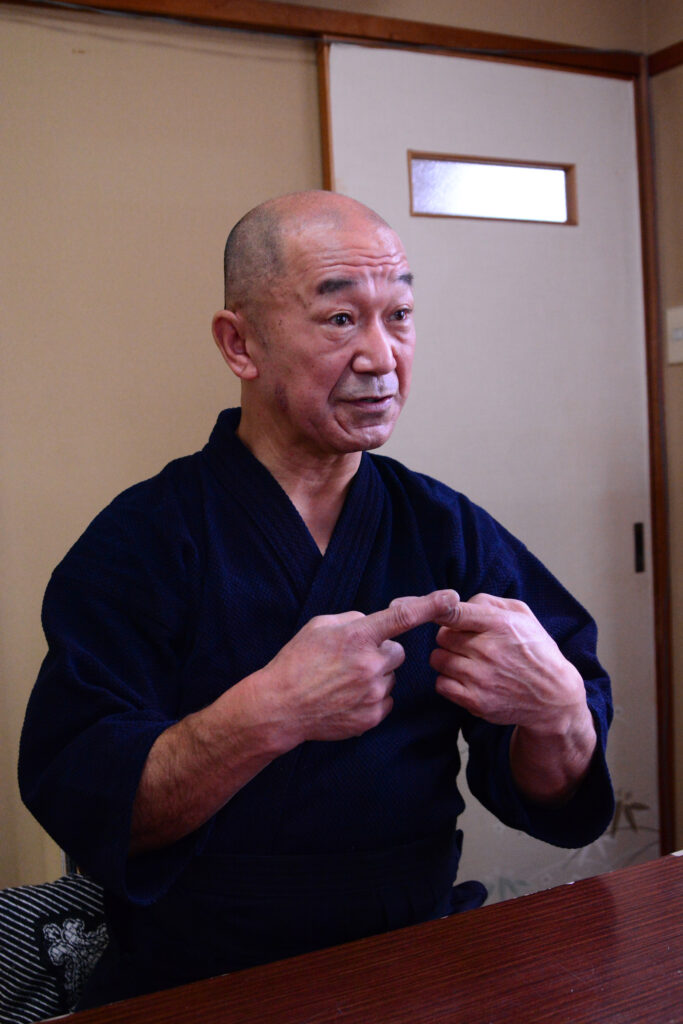
The good, the bad
Clarifying issues through video analysis
For quite some time now, I have been repeatedly recording Tachiai Keiko and Kihon Keiko on video, and then watching the video and applying it to my next Keiko. I have been doing this since before I took the 8th Dan examination, so I don’t know how many years it has been. …… Therefore, I have always felt the importance of taking videos and using them for reflection.
Currently, several people ask me to critique their Keiko videos. So we talk to each other about what is good and what is lacking, and tell each other to make use of it in our Keiko again. We sometimes do this with the general practitioners who attend the Sugiyama Dojo in Nagoya, where I am currently active, and when we watch videos of Keiko between 7th Dan students of the same age group or Keiko with a good Sensei, we talk about what was good and what we should reflect on and make use of it in the next Keiko. This will help to clarify the goal and focus of the next Keiko and improve the level of the Keiko itself.
What we pay special attention to when watching the videos is whether or not we are showing our strengths in Tachiai, or if not, the reasons why, and whether or not we are applying Seme in the right spots, and so on.
If the cause of a point for improvement is not clarified, the level of Keiko will not improve. This is because even if you are praised for your recent improvement, you do not know specifically what has improved.
It is only when you can objectively see what is good or bad that you can deepen your understanding of your own Kendo.
I often hear people say, “I managed to land strikes, but I didn’t pass the Dan examination”. Do they really mean to say this with an objective view of themselves and a good understanding of what they are saying?
The Ippon required at the national Dan examinations requires a high level, such as a full disposition and proper Kamae, as well as a high level of understanding of Maai and opportunity. It is a question of whether or not one is able to win through Seme and is victorious from the time they enter Issoku Itto no Maai to the time they strike.
This is where Tame becomes important. “Tame” is sometimes replaced by the word “patience”. In order to win through Seme, you must have Tame. Tame is what causes the opponent to have the four impediments, and it is what draws the opponent out or makes him indecisive.
If you can capture that indecision in such a situation, or if you can perform a Men-suriage-men technique, it will be a highly valued Ippon. It means that you have made good use of your opponent. If you do not understand how to use your opponent, the examiners will be able to see right through you.
The reason for using video is to find hints for practicing offensive and winning Kendo. When you have a clear sense of goal and purpose, you can confidently and clearly state your goals in today’s Keiko.
Many general practitioners juggle Kendo with work, housework, and other commitments. I understand that time is limited, but I hope that they will always incorporate the basics and study the entries of Seme. Kendo becomes more fun when you understand the logic of the game. I am teaching Kendo with the hope that my students will learn the joy of Kendo.

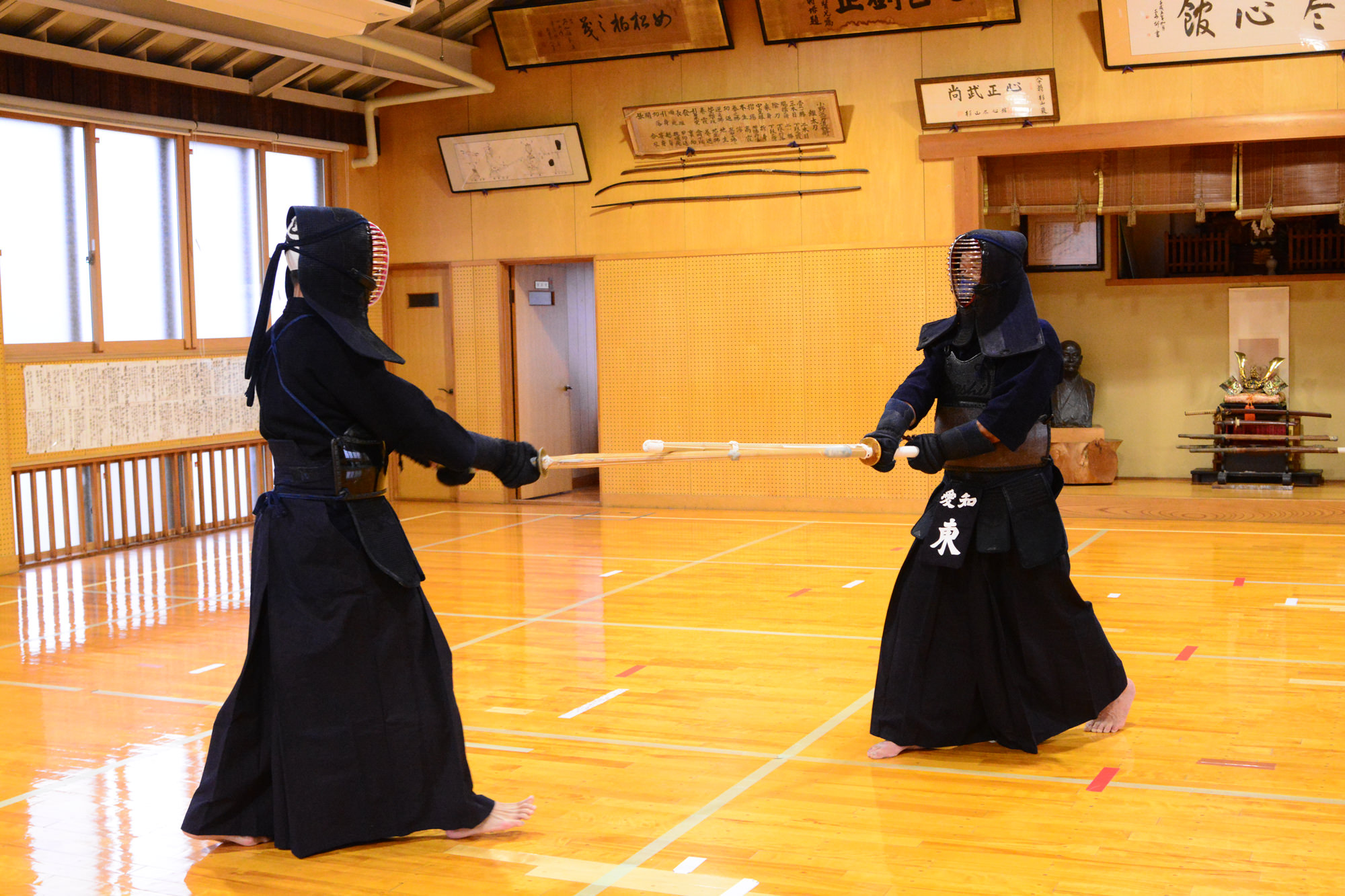
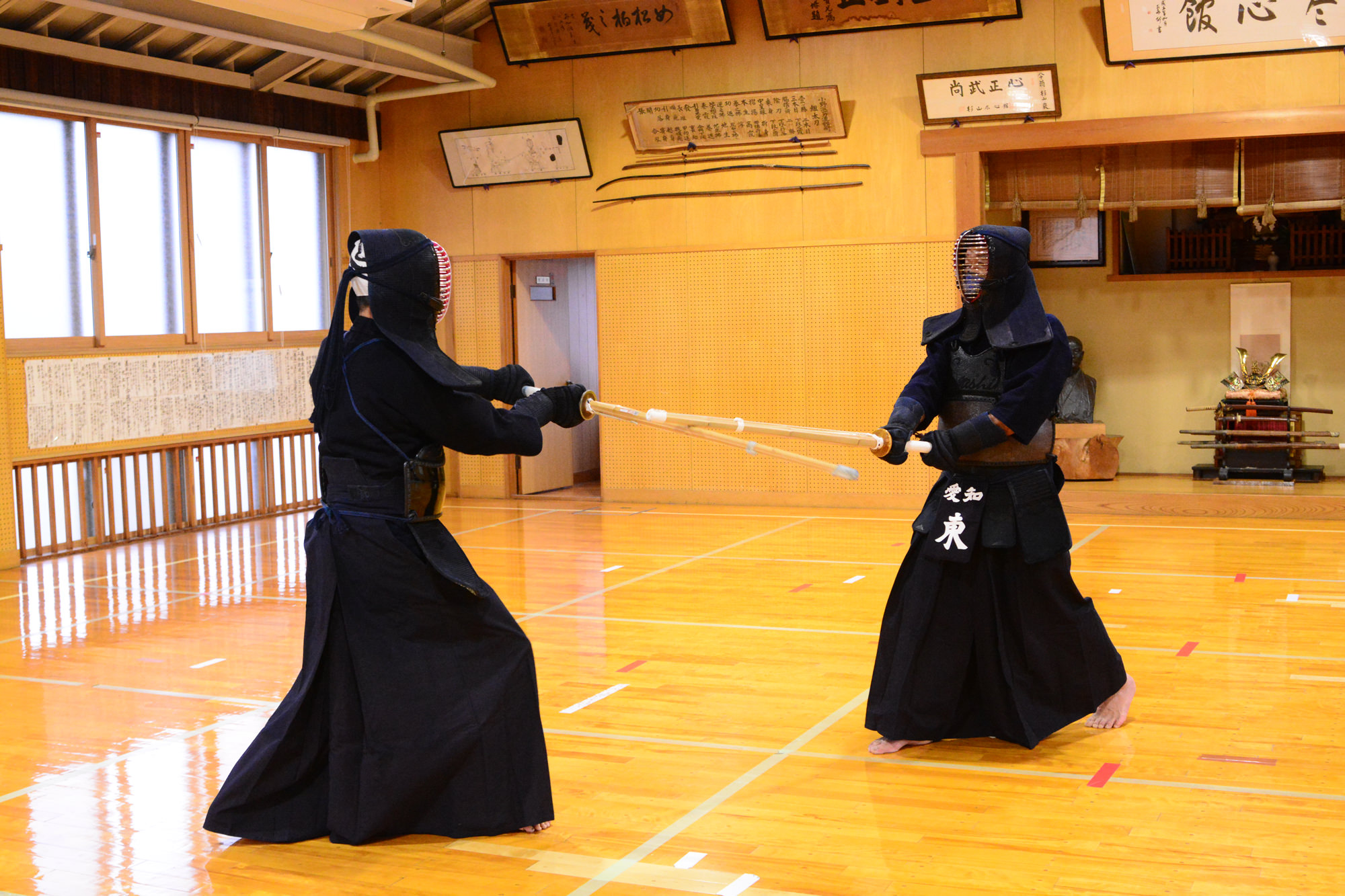
Things to focus on in footage
The rest of this article is only available for Kendo Jidai International subscribers!

